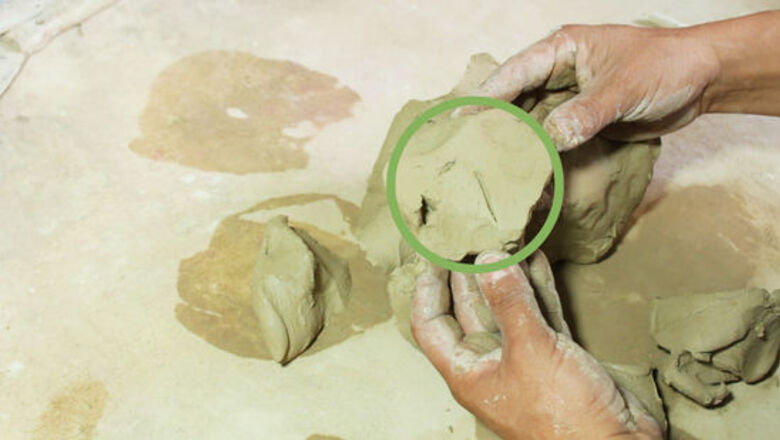
views
Preparations
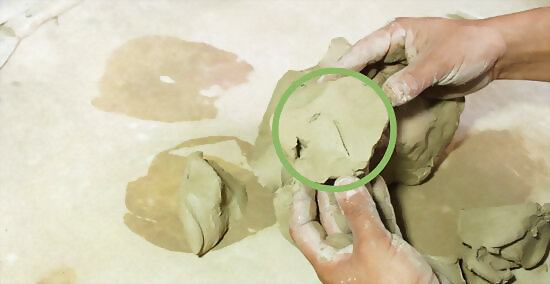
Knead the clay. Start with about 1/2 pound (.25 kilos) of clay. Slowly warm it and work out the air bubbles by kneading it with your hands. This will even out the clay’s consistency, eliminating lumps of soft spots, and make it more pliable and easier to work with. Take care to avoid folding, poking, or other actions that could add air pockets and bubbles to your clay—these could cause your pottery to explode in the oven.
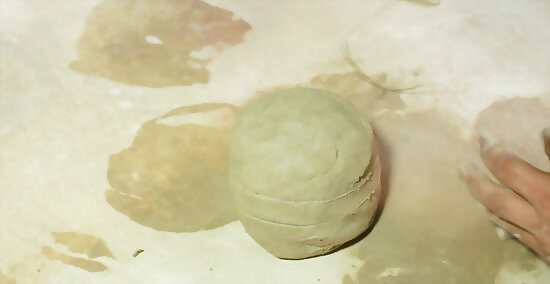
Slice your clay in half with a stiff wire, and check for bubbles or gaps.
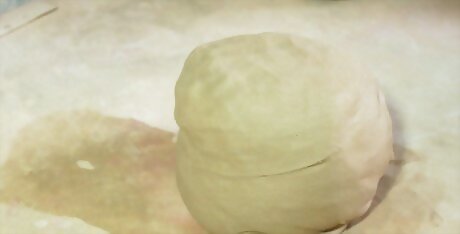
Once your clay is kneaded, try one of the methods below to make your own pot. See the wikiHow article How to Knead Clay
Coiled Clay Pots
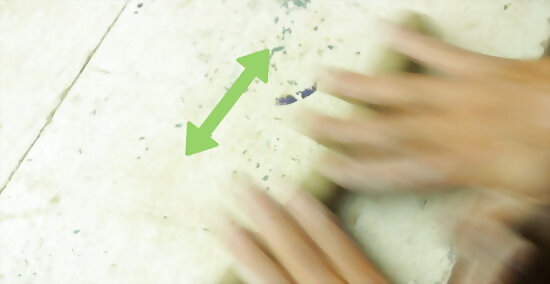
Once the clay is warm and pliable, take a fist-sized clump and roll it into a long rope called a coil. The diameter of the coil will determine the thickness of your pot's walls. For your first pots, roll your coils out till they’re a little thicker than a pencil, and about 12 to 24 inches (30 to 60 cm) long. Sculptor Natasha Dikareva suggests "keeping the coil as even in thickness as possible." You may get thin or weak spots as you roll your coil out. Try avoiding that section as you work, but if it becomes a problem just break the coil at the weak spot, set one part aside, and finish the other.
Create the bottom. Starting from one end, wrap the coil in a spiral until the bottom is the size you have in mind. For example, for a pot using coils about 1/4 inch (.6 cm), your base might be 3 inches (8 cm) in diameter. You can also create the bottom by rolling out some clay to about the same thickness as your coils, and then trim the excess with a knife, using cup or plate as your guide.
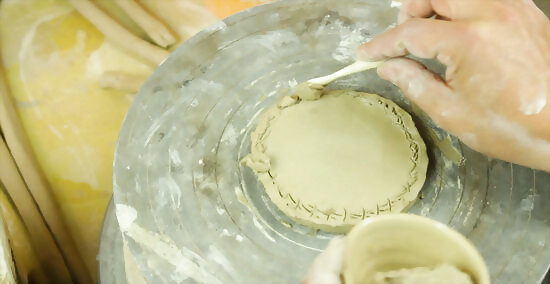
Prep the clay and start working. Score the outer 1/4 (.6 cm) inch of the bottom, and dampen with water or slurry (a thin mix of clay and water). Do the same with the bottom of the coils as you work. This will improve the clay bond and make your pot stronger. Lay the first coil on top of the base, and wrap it around, building up the wall.
Strengthen your pot. To make your work durable, strengthen the clay bond by smoothing down the inside of the pot, forcing down the clay from the upper coil into the joint below it. To maintain the shape of your pot, support the outside of the pot as you smooth the inside. You can smooth both inside and outside if you wish.
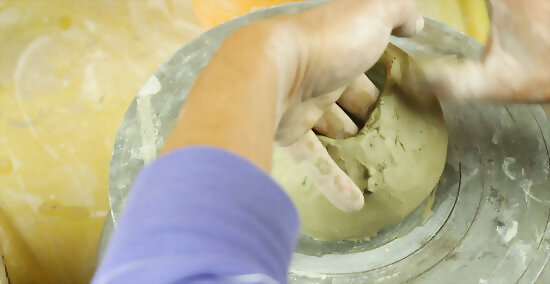
Shape your pot as you make it. Create your contours by adjusting the placement of the coils, and shaping the clay during the smoothing and strengthening process. If the clay is a little hard, sculptor Natasha Dikareva advises that "you might need to slip and score in between the coils to make sure they stick together nicely."
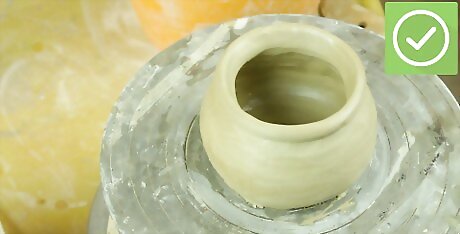
Finish your pot. Add any decoration or glazing as desired, and depending on what kind of clay you are using you may air-dry your pot, bake it, or fire it in a kiln. Follow the manufacturer’s instructions on the correct method.
Make a Pinch Pot
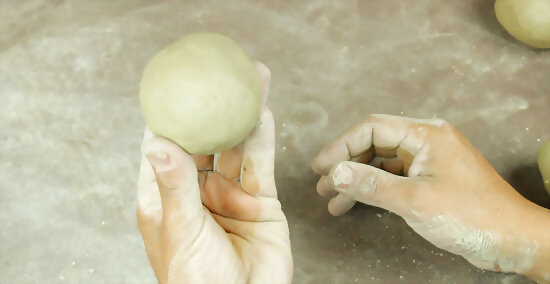
Make a ball. Roll the clay into a ball, and make sure it's moist.
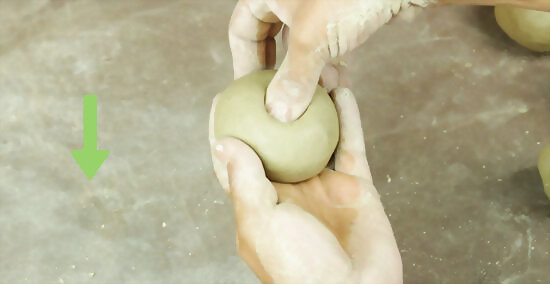
Make a hole. Sculptor Natasha Dikareva suggests "using your thumb to create a hole that doesn't go all the way through the clay."
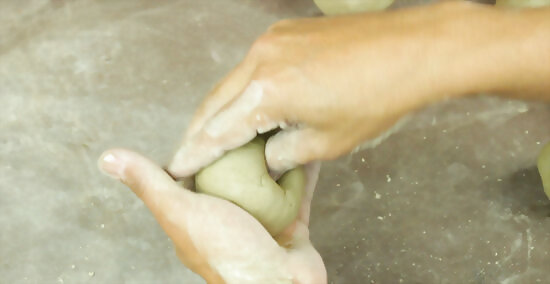
Work the sides. According to sculptor Natasha Dikareva, "Start to rotate your bowl with the thumb inside your bowl. Then, squeeze and pull at the same time." Work all around the inside, and with each pass, pinch from the bottom and move up, repeating until your vessel has the shape you want.
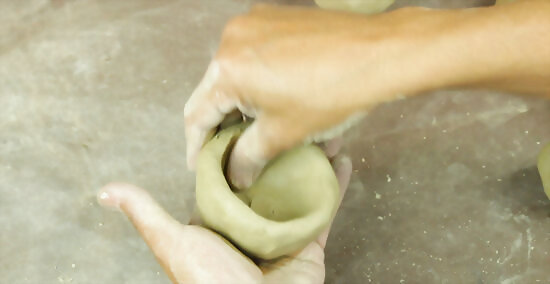
Flatten the bottom. Press from the inside, against the table you're working on, so that the bottom is smooth and flat. Sculptor Natasha Dikareva adds that "you can also use a paddle tool to shape your pinch pot and create a nice bottom for it."
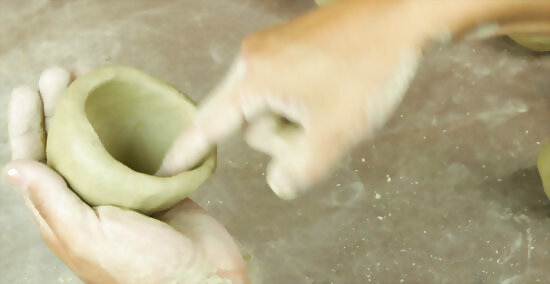
Smooth out the inside and outside of the pot, as desired. Decorate, and follow the manufacturer's instructions for curing and finishing your pot.
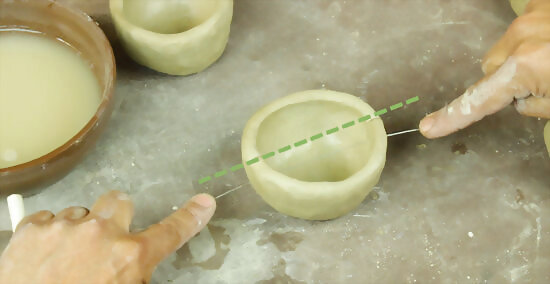
For more detailed information, see How to Make a Pinch Pot.
Using a Wheel
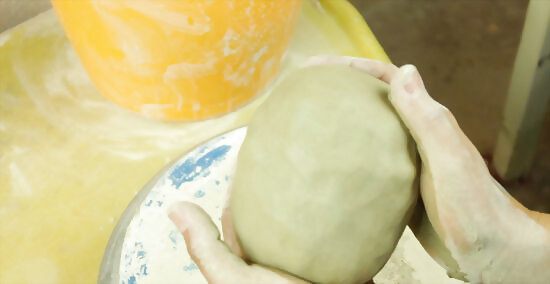
Smack your clay. Throw it firmly from hand to hand, smacking it into a ball shape.
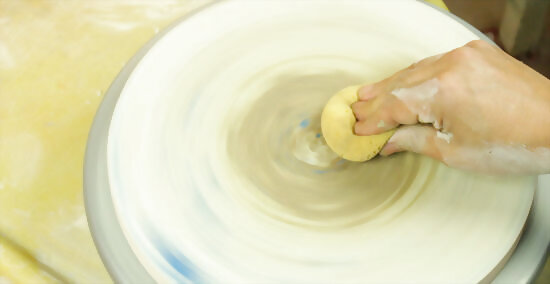
Dry your wheel. This will help the ball of clay adhere to the wheel once it starts spinning. The last thing you want is a ball of wet clay flying across the room.
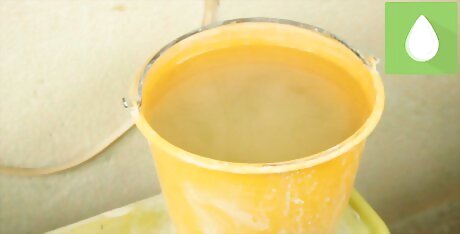
Have some water. Place a bucket of water where you can easily reach it to wet your hands while you work.
Throw the clay. Throw down the ball of clay as close to the center of the wheel as you can, then press it down into a conical shape.
Start spinning. As you build up speed, wet the clay, and with one hand on the side of the clay lump, and the other side on top of it, ease the clump towards the middle. Use the upper hand to keep the clay from flying out of control. You can tell the clay is centered when it no longer looks like it's wobbling, but sitting stationary in the center of the spinning wheel. Don't stop spinning.
Wet your hands. Then work the clay into a cone, then press it down into a thick disk. Repeat this step a couple times. This is known as "wheel wedging" and helps to condition the clay. Make sure you keep the clay centered as you work.
Push a thumb into the middle of the spinning mass, until it's about 1/2 inch (1.5cm) from the bottom.
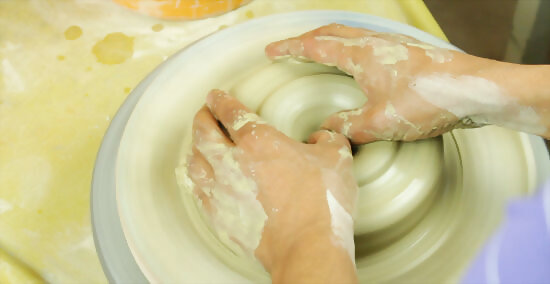
Push 4 fingers into the hole, and work them around until the hole is as big as you would like. Continue working the hole, using a hand on the outside of the clay to shape your pot.
Work slowly. Gradually pull the clay up with even pressure, until it's the desired height.
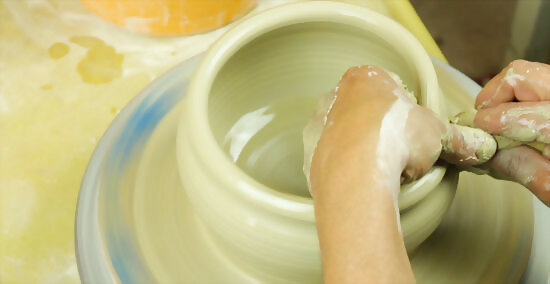
Spread the top. If you want it a bit wider at the neck, just pull back with your inside fingers. Don't do it too hard.
Remove the finished pot from the wheel. Wet the wheel (not the pot) and using a stiff wire or fishing line, and holding it with both hands, pull it from the back of the pot towards you until the pot is separate from the wheel.
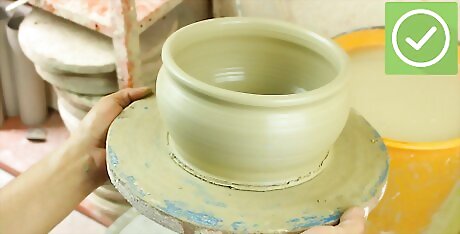
Follow the manufacturer's instructions for finishing and firing your clay pot.




















Comments
0 comment